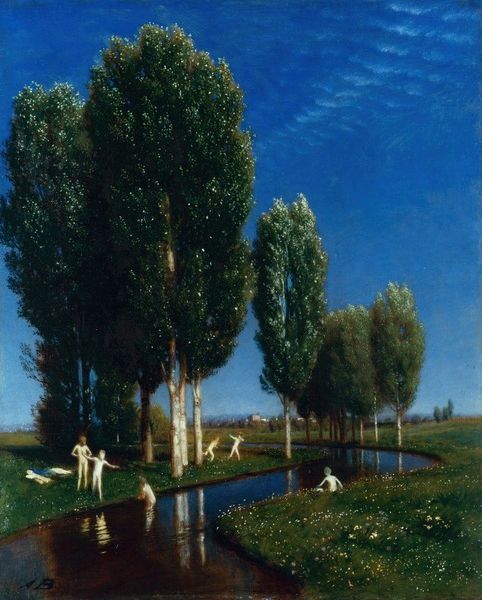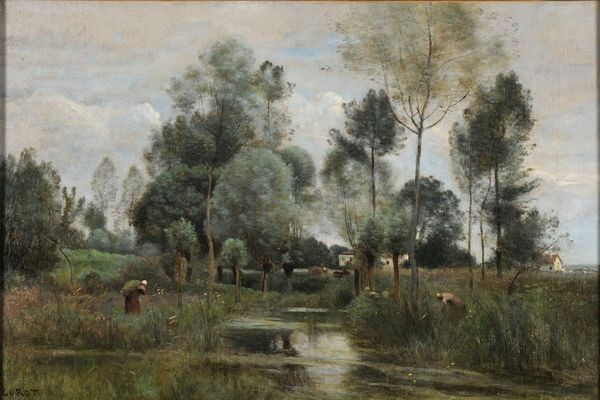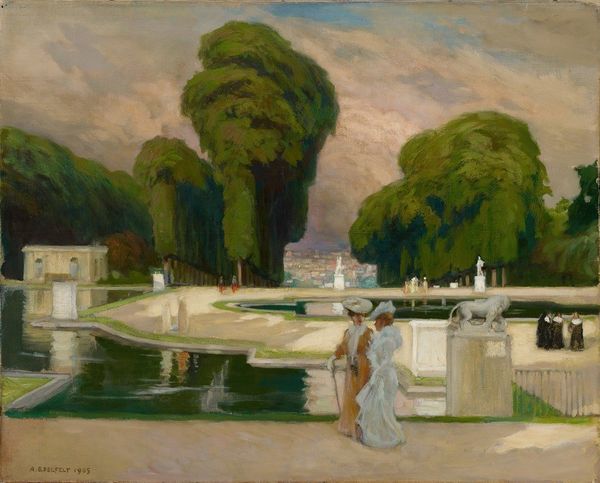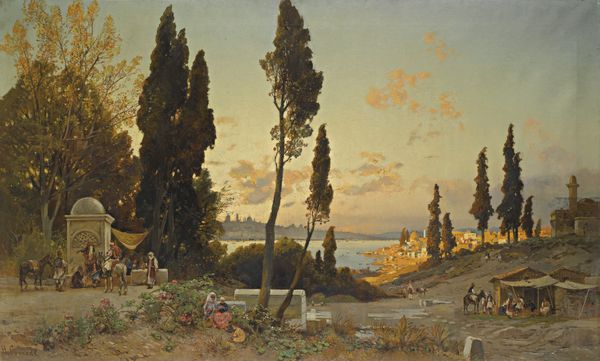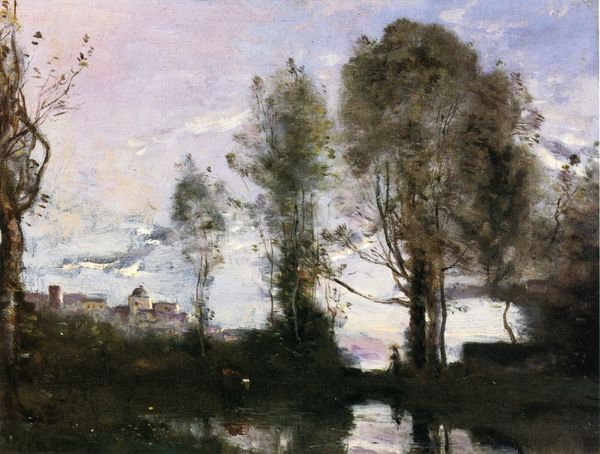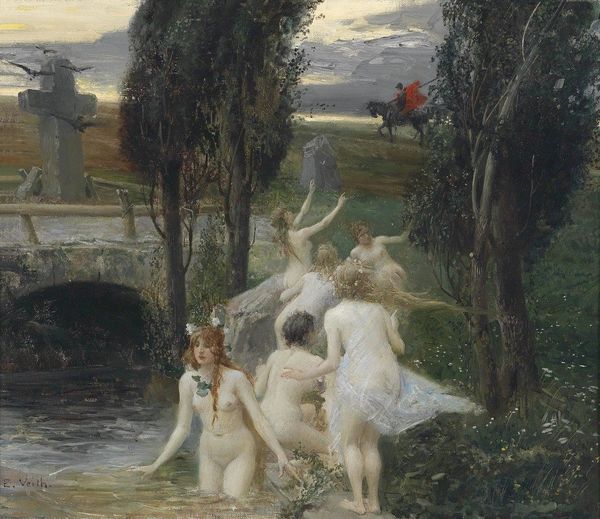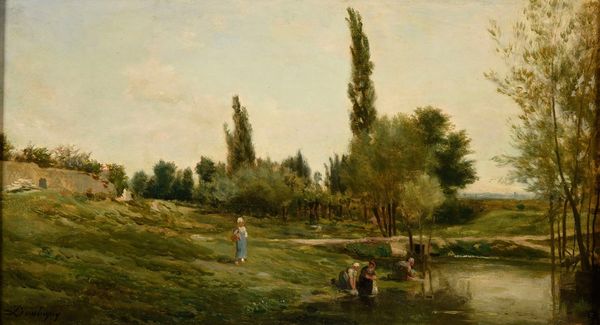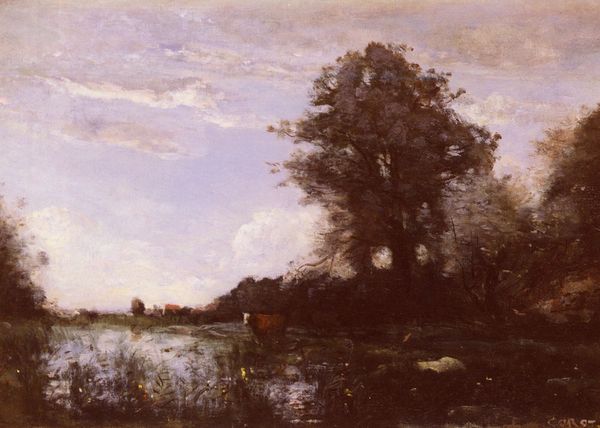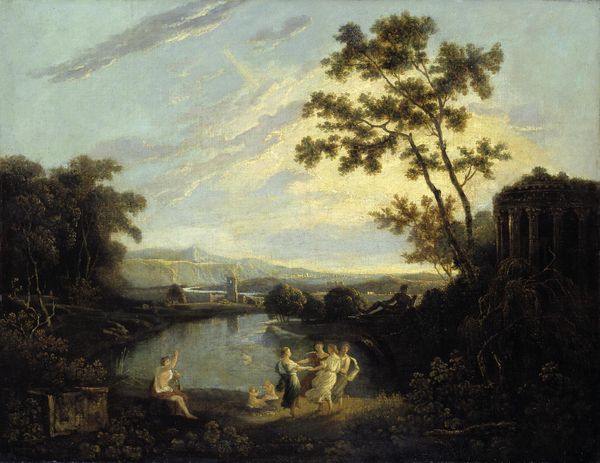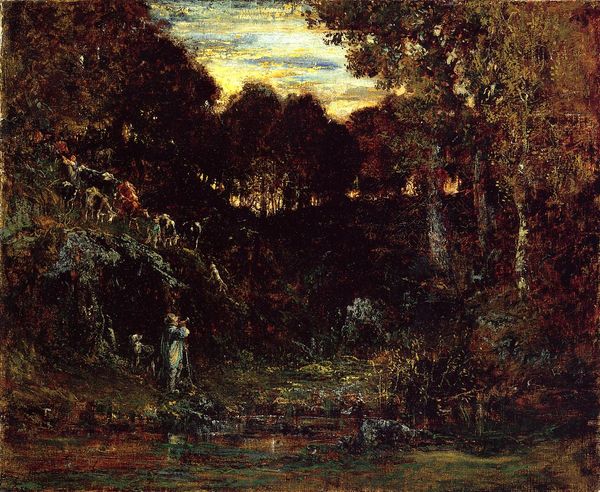
Dimensions: 140 x 94 cm
Copyright: Public domain
Editor: So, here we have Arnold Böcklin’s “The Island of Life” from 1888. It's an oil painting, and it's got this very serene, almost otherworldly feel. What do you make of it, its kind of dreamlike, symbolist style? Curator: Dreamlike is right. For me, Böcklin is dipping his brush into the primordial soup of the subconscious. This isn't just an island; it’s a stage for the human drama of existence, don’t you think? See how he uses the water, that liminal space – it's both a barrier and a passageway. Like the amniotic fluid from where it all begins! Editor: That's a cool idea. It's kind of eerie to me, because of that very strange group of pale figures on the beach. I suppose that could suggest something profound about existence but all the white does strike me as somewhat sinister. Curator: Ah, yes, those figures. To me, they are a community! But who decides on which side we stay? The beach with our pale human fellows, or continue the trip in the boat into what seems to be, by this painting's perspective, complete and absolute nothingness! See that small silhouette right above them on what appears to be an exit from a tunnel-like opening? He almost appears to be waving his hand towards someone from afar to welcome someone new to the group. Almost like the hand of the sculptor God creating life as the new form of humanity begins? And do not underestimate the power of swans, I hear these white majestic entities are a symbolic of faithfulness as partners in a relationship and life? How funny would it be for it to become the animal representation of love! Editor: So you see this painting as celebratory, or perhaps a transition, instead of grim or menacing? I like that, it adds another layer. Curator: Exactly! Art often holds a multitude of truths. Which is the true perspective on "The Island of Life", the beauty and potential for continuation that life entails, or a simple inevitable fate that everyone, eventually, faces? It really becomes a matter of personal perspective once we enter Böcklin's mind, does it not? Editor: Definitely! Thanks for illuminating some new ideas for me about this painting, curator, that was awesome!
Comments
No comments
Be the first to comment and join the conversation on the ultimate creative platform.
